The 1980s saw a boom in mass-market, paperback horror novels. Authors such as Stephen King, Dean Koontz, and Anne Rice had all found widespread success with bestselling horror books in the previous decade, bringing rising visibility to a genre that had readily been gaining commercial ground since the 1960s. Additionally, the popularity (and shock value) of movies such as The Exorcist (1973) and Rosemary’s Baby (1968) drove audiences to seek out horror stories in other formats, including novels. This uptick made publishers more likely to say yes to horror stories and gave eager readers a wide variety of authors and microgenres from which to choose. The social climate of the eighties may have also created a taste for horror, as the decade saw increasing concern about violent crime, a backlash to the rapid societal change of the sixties and seventies, and the beginnings of the Satanic Panic. As horror is often a genre that reflects the fears of the society that reads and writes it, all of these trends contributed to the eighties horror novel boom.
Below, you’ll find 1980s horror novels that haven’t stood the test of time, as well as a few that have become classics of the genre. Of course, as I’ve talked about before, just because a book didn’t age well doesn’t mean you shouldn’t read it or that it should be removed from shelves. Rather, think of this as your primer to the scary, shocking, and sometimes enduring world of eighties horror novels as you look to explore the genre.
Four 1980s Horror Novels That Aged Badly…
The Tribe by Glenn ChandlerThe Tribe is a classic “foreign cannibalism invades England” horror story. The book opens in Papua New Guinea, where a visiting researcher lies wounded in a hut, waiting for members of the local tribe to come and consume him in a ritualistic, cannibal feast. From there, the book hops to England, where Professor Allen Braithwaite has returned from Papua New Guinea where he claims to have “discovered” a previously uncontacted tribe. Soon, students connected to Braithwaite’s expedition start to meet violent ends. Centered around stomach-churning descriptions of disembowelment and the consumption of human flesh, the writing style of The Tribe reflects an eighties horror writing trend in which authors competed to shock audiences with the most grisly and nasty descriptions they could muster. However, the “cannibalistic savages” trope used here hasn’t aged well, and the nebulous connections between stories make the plot seem disjointed. |

The Ashton Horror (Dark Forces #12) by Laurie BridgesThe Dark Forces series was part of the teen paperback horror boom of the eighties. With their black covers featuring young people in varying states of distress and demonic possession, the books drew in horror fans, but their actual purpose was to warn young readers off of dabbling in various occult practices as well as illustrating the dangers that lurked behind pastimes like Satanic rock music and addictive video games. The Ashton Horror’s plot involves Dennis, an innocent teen who is lured into a Dungeons & Dragons-like fantasy game by a pretty classmate, only to find the horrors of the game coming to life. A forerunner to the Satanic Panic era, the idea of kids getting too into a tabletop game they play with friends seems almost quaint in the era of 24/7 smartphone access and increasing social isolation. |
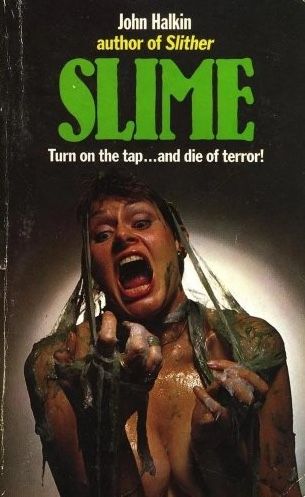
Slime by John HalkinThe plot here isn’t anything particularly new or objectionable: killer jellyfish have begun multiplying at an astounding rate and using their deadly slime to kill innocent ocean swimmers and then making their way upstream via lakes and rivers. Possibly somewhat influenced by the late 1970s popularity of the Jaws franchise and themes of the natural world turned monstrous, this horror focuses on a race to defeat the killer animals before they completely infest the water supply. The book leads to a lot of questions about the scientific possibility of such a thing, but also to the question of why one of the original mass market covers needed to feature a shirtless woman covered in slime. Like many horror novels of the eighties that didn’t age well, Slime relied on the sensationalism of its cover art to draw in readers. |
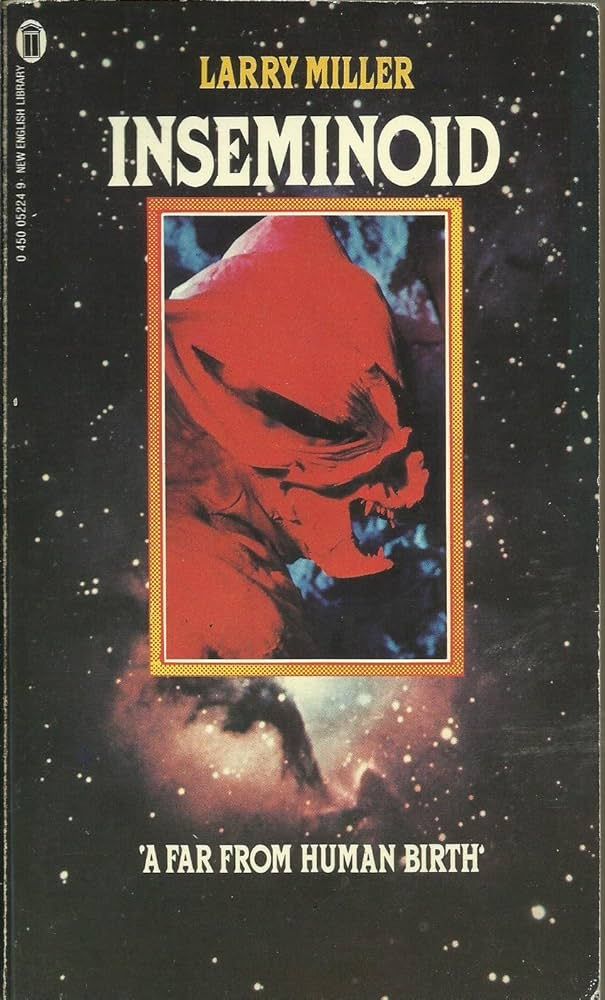
Inseminoid by Larry MillerInseminoid is purported to be a story of the third attempt by man to land on a seemingly lifeless planet — after two failed attempts — and the horrors that are unleashed when the landing party opens an underground chamber. Instead, most of the text is taken over with the narrator salivating over and meticulously describing the bodies of women on the ship, the overdone details of a weird forced mating/coupling program amongst the space explorers, and various plot points that rip off Alien. |
…And Four 1980s Horror Novels That Still Stand Up.
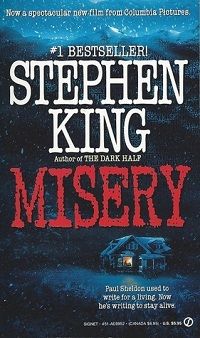
Misery by Stephen KingThe success of Stephen King’s novels in the 1970s played a large role in the horror novel boom of the 1980s, and King continued to be a prolific and award-winning writer throughout that decade as well. In 1987, he published Misery, the story of a writer trapped by his rabid fan and forced to continue a series of books whose main character he had killed in the latest installment under threats of torture and death. Misery went on to win the Bram Stoker Award in 1987 and was later made into a movie that nabbed Kathy Bates the 1991 Academy Award for Best Actress for her portrayal of Annie Wilkes, marking yet another novel of King’s that would become a standard of the horror genre. |
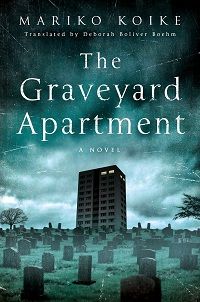
The Graveyard Apartment by Mariko KoikeOriginally published in Japan in 1986, Koike’s novel has gained international popularity for its chilling story of an apartment building constructed on haunted ground. The story opens full of hope, as young, idyllic newlyweds move into what seems to be the perfect apartment in which to start their new life. However, things quickly take a turn for the creepy when the couple starts to suspect someone — or something — dangerous is living in the building’s basement. Soon, the other tenants have fled their homes, leaving the couple alone to face whatever is haunting them. This story is a masterpiece of psychological horror, and I’m glad it’s getting more attention from international readers. |
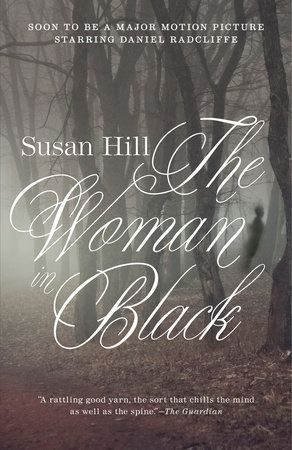
The Woman in Black by Susan HillUnlike a lot of eighties horror novels, Hill’s story stays away from slasher tropes in favor of a gothic horror story set in an English village. The story is told in the voice of Arthur Kipps, who is gathered around the fireplace with his wife and children sharing ghost stories. When it is Kipp’s turn to share a story, he storms off and begins to write down the horrors of his past in an attempt to excise them. From there, Kipp takes readers back to the estate of a wealthy, recently deceased woman where he was sent as a junior solicitor. Cut off from the wider world, Kipp begins to see glimpses of a mysterious woman clothed in black, but the townspeople are reluctant to tell him anything about what he’s seen or the mysterious happenings at the estate. Slowly, the reader is drawn into the darkness of Kipp’s past and the legend of The Woman in Black. |
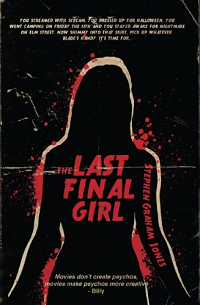
The Last Final Girl by Stephen Graham JonesThe Last Final Girl isn’t from the eighties (it was published in 2012) but for lovers of eighties horror tropes, slasher flicks, and Final Girl characters, it’s definitely a book to read. Jones takes classic eighties horror novel tropes: the small town, the powerful sheriff, and the violent killer that lurks in the suburban neighborhoods and uses them to create a tribute to the eighties horror novels he loved as a younger reader. Structured in a movie-script format, the novel pays tribute to the influence of the eighties on the horror genre. |
If you’re interested in more ’80s novels that aged badly, you can check out our science-fiction version of this list here. Be sure to also browse our horror archives for plenty of scarily good book recommendations!
Source : These 1980s Horror Novels Will Frighten You With How Badly They Aged







